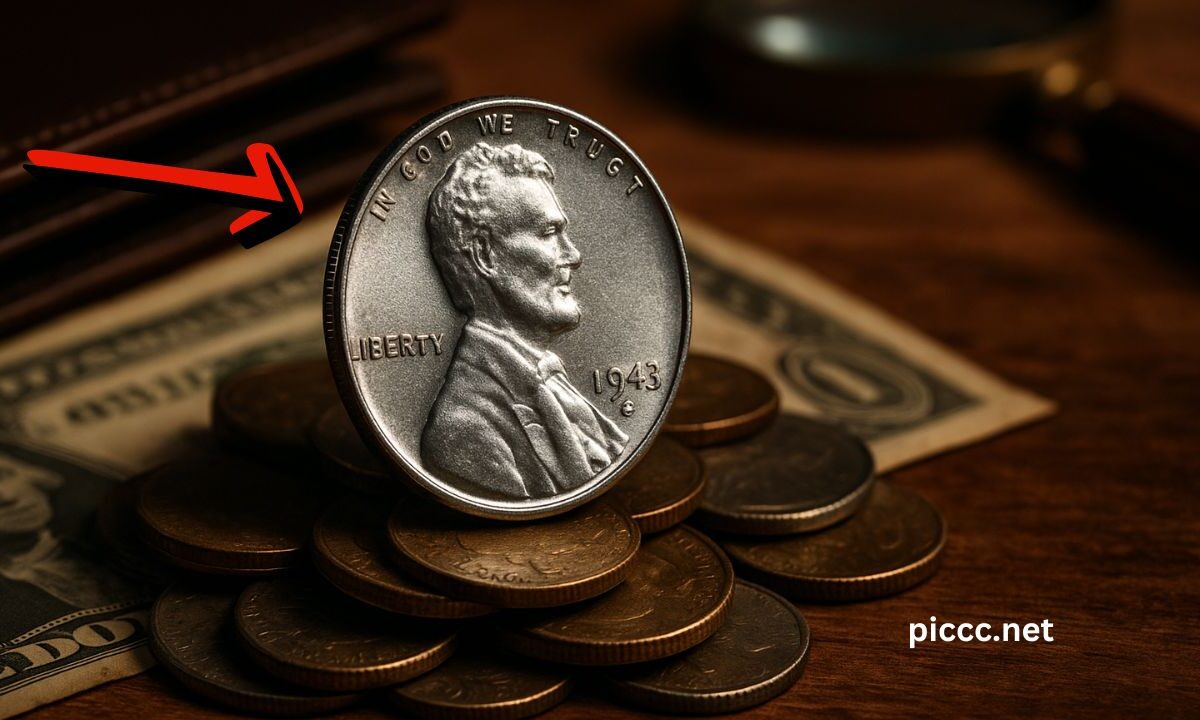In 1943, the U.S. Mint switched from bronze to zinc-coated steel to save copper for World War II. That’s why most 1943 cents are the silvery “steelies.” They’re historically cool—but usually common.
The exceptions are spectacular: a few 1943 bronze (copper) cents struck in error, and elite high-grade or major-error steel cents. Those outliers can sell for thousands—even six figures—and are the only realistic way a “steel penny” find could make you rich overnight.
Realistic values at a glance
Everyday circulated 1943 steel cents are typically $0.15–$0.50; attractive uncirculated (MS) pieces start around a few dollars and can reach into the low thousands at the absolute top. Record sales include MS68/68+ steel cents bringing several thousand to $33,600 at auction.
The game-changer? Bronze (copper) planchet errors dated 1943. The unique 1943-D bronze cent holds an auction record of $840,000 (PCGS MS64BN, Heritage, Jan. 24, 2021); other 1943 bronze examples have realized hundreds of thousands.
Quick value table
| Coin / Variety | Typical Range (recent guides & sales) | Notes |
|---|---|---|
| 1943 Steel (circulated) | $0.15–$0.50 | Common wartime issue. |
| 1943 Steel (nice uncirculated) | $2–$50+ | Higher eye appeal boosts price. |
| 1943 Steel (MS67–MS68) | Hundreds–$3,000+ | Top-pop pieces in third-party holders |
| 1943 Steel (MS68+) | Up to ~$33,600 | Auction highlight in 2020. |
| 1943 Bronze (Philadelphia) | Six figures | Extremely rare off-metal error. |
| 1943-D Bronze (Denver) | Record $840,000 | Unique; Heritage 1/24/2021 sale. |
| 1943 Error Varieties (steel) | $25–$400+ | Doubled dies, RPMs, off-center raise value. |
How to tell if yours is the rare one
- Magnet test: Steel sticks; copper doesn’t. If a 1943 cent doesn’t stick to a magnet, weigh it next.
- Weight test: Steel ~2.7 g; bronze ~3.11 g. A 1943 coin near 3.11 g is a candidate for bronze error—seek authentication.
- Look for major errors/varieties on steel cents: doubled dies, clipped planchets, off-center strikes, re-punched mintmarks (1943-D/D RPM). These can take a common steelie into collectible territory.
- Grade matters: Certified MS67–MS68 steel cents can bring four- to five-figure prices when eye appeal is exceptiona
Why 1943 bronze cents exist
Leftover bronze planchets from 1942 likely slipped into the presses in early 1943, creating a tiny population of wrong-metal coins. They’re among the most famous U.S. error coins and the chief reason 1943 cents occasionally make headlines for life-changing sums.
What to do if you think you’ve struck gold
- Don’t clean the coin. Cleaning hurts value.
- Use a magnet and a scale (to 0.01 g).
- Seek third-party authentication (e.g., PCGS/NGC) and consider a major auction house if it appears to be bronze or an elite error/grade. Recent PCGS auction records document the strongest public prices.
Most 1943 Steel Wheat Pennies are modestly priced historical keepsakes—but rare bronze errors, dramatic mint varieties, and ultra-high grades have sold for thousands to hundreds of thousands of dollars.
A quick magnet and weight check, followed by professional certification, is the fastest path to knowing whether your pocket change is just cool history—or a once-in-a-lifetime windfall.
FAQs
Are all shiny 1943 “silver” pennies valuable?
No. Most are zinc-coated steel worth cents to a few dollars unless they’re high-grade or major errors.
What’s the rarest 1943 cent?
The 1943-D bronze (copper) cent—unique and sold for $840,000 in 2021.
How can I spot a fake copper 1943?
If it sticks to a magnet, it’s not copper. Also weigh it: copper should be ~3.11 g; steel is ~2.7 g. Authenticate before selling.

